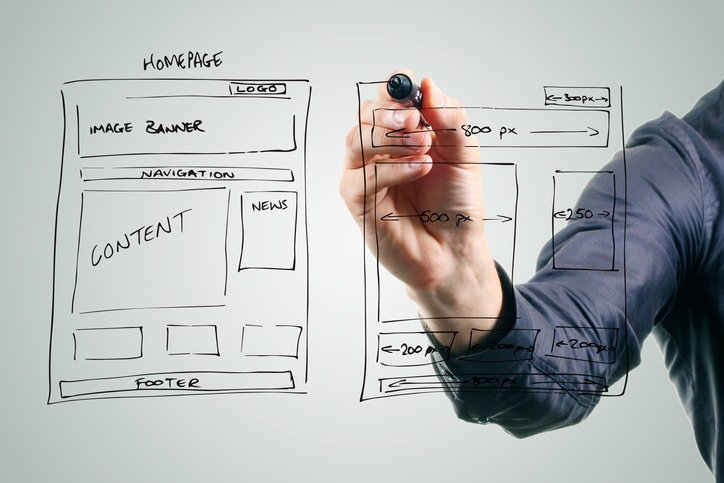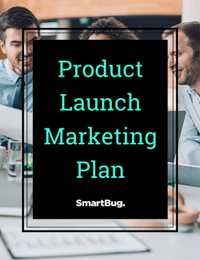
By Andrew Macey
Every few years, it is time to revisit your company’s website. Maybe you’re gearing up for a new product launch or you’ve gone through a rebrand, but whatever the reason is, the website needs to be redesigned. As we all know, this is no easy feat. As a B2B company, your website should be your best salesperson: clearly outlining your value proposition, sharing your thought leadership, and generating qualified leads.
As the leader of this project, it is important to clearly understand timelines and set expectations for your entire team. There is no doubt internal stakeholders will be involved, so it is critical to manage this project effectively and keep everything on track and moving forward. Like many tasks, it can be effective to work backwards; establishing when you want the site to go live and then working the timeline back from that date. This launch date can be the determining factor as to how the website will be built and what resources are necessary.
Two Ways to Build the Website
There are two distinct ways to build your next website. In order to accurately forecast the project dates and milestones, it is necessary to choose which process will be used, waterfall or growth-driven design. Each has its own pros and cons, however the main differentiating factor is timeline.
Waterfall Process
Building a website using the classic waterfall process is a tried-and-true method that incorporates best practices and yields a quality website. These include the steps most marketers are familiar with and is ideal for projects with the luxury of a long timeline, not in need of a quick turnaround. The timeline for a website using the waterfall process can range from 12 to 18 weeks, depending on the size of the website and complexity of development. Additionally, if custom applications are needed to be built or additional website sections (eCommerce or product catalogues) required, this can extend the timeline as well.
What’s important to note is that by using this process, the whole site is built at once. Early on in the strategy phase, the entire sitemap is laid out and includes all items within the website. There may be lower-priority pages included, but by following this methodology, the site is built as a whole and taken live all together.
Steps in the waterfall development process include:
- Discovery
- Site strategy/sitemap development
- Page wireframes
- Design
- Development
- Testing/QA
- Launch
As you can see, this process follows the common steps you are probably most familiar with. The focus here is to include all items from the get-go, prioritizing all pages and website sections equally.
Growth-Driven Design
For website projects that have a more aggressive timeline or require a shorter turnaround, the waterfall process might not be the best fit. In many cases, a new site needs to be live by a certain date to accommodate an event or product launch, where there is little flexibility in postponing. If this is the case, growth-driven design (GDD) is an alternative, yet equally effective option. GDD is designed to get a site launched quickly by developing a “launchpad” site that prioritizes the key website pages that yield majority of business impact. This launchpad site is often limited in terms of number of pages to be developed so that the turnaround time can be shortened. GDD projects can be as short as 4 weeks, but will continue monthly beyond the initial launch date.
If you’re familiar with agile, then GDD should be easy to understand. By starting with a launchpad website, you can focus solely on those items that are necessary for launch. These pages often include:
- Homepage
- Products/Solutions page
- Pricing
- Contact Us
- About Us
- Sales-focused landing pages (request a demo, free trial, contact sales)
- Pricing
Additionally, you can include thought-leadership content as well, such as blogs or a resource center, as long as they are already built and can be easily migrated. The idea is to not waste time on low-impact pages in the initial phase, but instead to build those additional items after launch.
Although the initial launchpad site timeline can be as short as 4 weeks, the overall project can last many months beyond that. With GDD, each month you will continue to iterate on the website by improving key pages and building out new ones. Those lower-impact pages we discussed (content, team pages, case studies, etc.) can be added to your “wishlist” and should be developed over time, based on priority and business impact. Although the overall project can take longer than that of a waterfall website, the initial time to launch is significantly shorter and can be a perfect solution for hitting key dates and deadlines.
As you can see, there is more than one way to develop a great inbound-focused B2B website. When heading up this project, it is important to fully understand your requirements and timeline. These can play a large role in determining the way in which your new site will be built. Whichever method you choose, be sure to accurately communicate the timeline to the rest of your team so that all resources can be utilized effectively.
What experience do you have building your B2B website using either methodology?

About the author
Andrew Macey was formerly the Director of Sales at SmartBug and is a HubSpot alumni. He has more than 5 years experience in inbound marketing and is a graduate of the University of Vermont. Read more articles by Andrew Macey.









